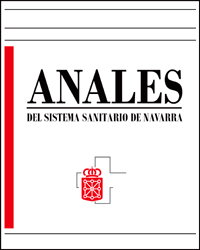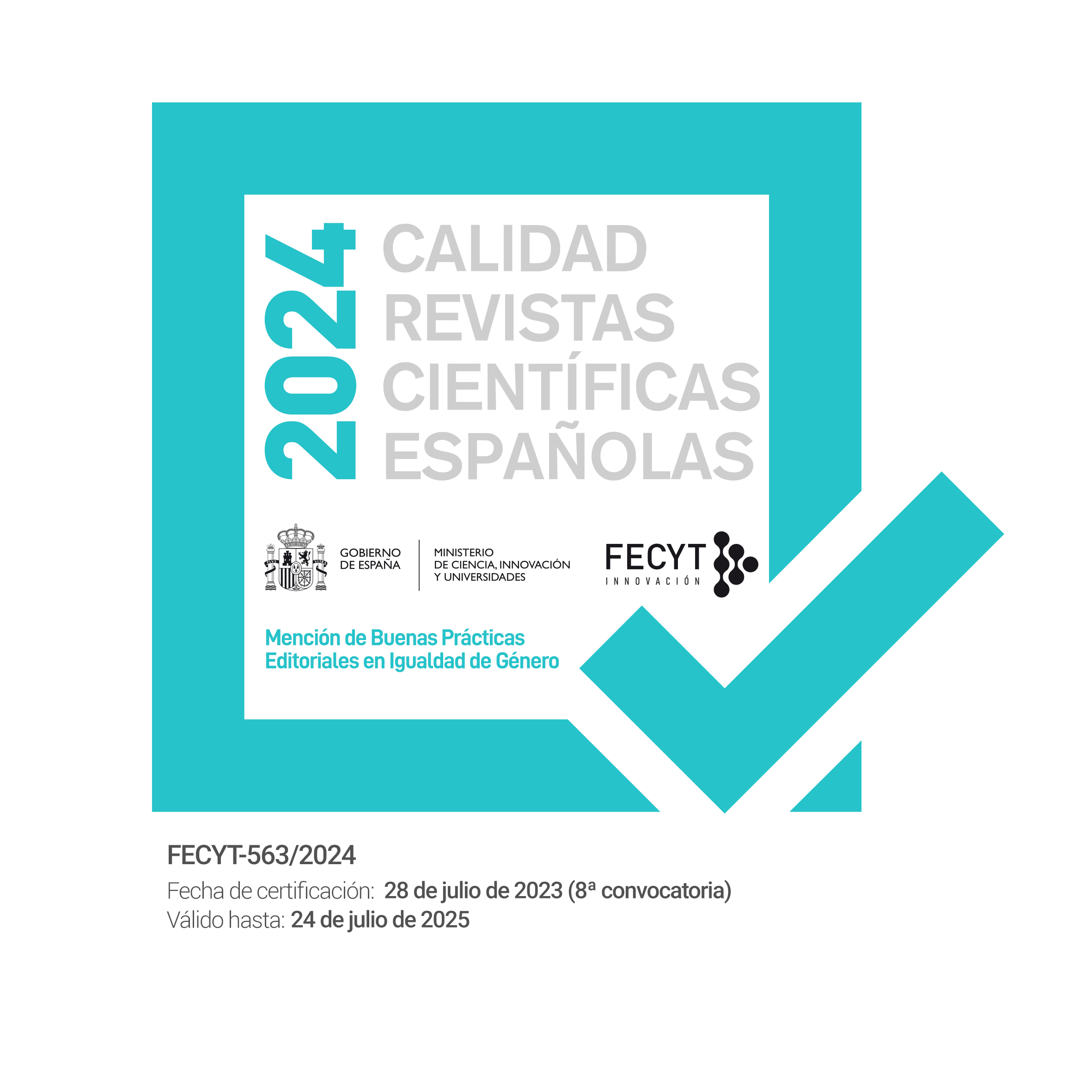Traducción y adaptación transcultural al contexto español del Person-Centred Practice Inventory-Staff (PCPI-S) para profesionales de la salud
DOI:
https://doi.org/10.23938/ASSN.1039Palabras clave:
Adaptación transcultural, Práctica centrada en la persona, Cuidado centrado en la persona, Profesionales de la salud, Encuestas y cuestionariosResumen
Fundamento. El Cuidado Centrado en la Persona (CCP) se ha convertido en un tema central dentro del ámbito sanitario acorde con las políticas de salud nacionales e internacionales. El Person Centred Practice Inventory Staff (PCPI-S) es un instrumento basado en el modelo teórico Person-Centred Practice Framework que evalúa la percepción que tienen los profesionales de la salud sobre una práctica centrada en la persona. El objetivo del estudio es obtener la primera versión española del PCPI-S traducido y adaptado a nuestro contexto español.
Método. Se llevó a cabo una traducción y adaptación cultural del instrumento utilizando la guía Translation and Cultural Adaptation of Patient Reported Outcomes Measures—Principles of Good Practice (PGP) que incluyó una sesión con expertos. También se realizó una validación de contenido de la claridad y relevancia de cada ítem (I-CVI), así como del cuestionario total (S-CVI/Ave).
Resultados. No se encontraron dificultades para llegar a un consenso en los doce ítems que necesitaron ser clarificados. El índice de validez de contenido por ítem (I-CVI) obtuvo una puntuación excelente para claridad en 53 ítems, y para relevancia en 59; el índice de validez de contenido del cuestionario (S-CVI/Ave) mostró resultados excelentes (≥90).
Conclusiones. Se ha obtenido la primera versión del PCPI-S adaptada al español, conceptual y semánticamente equivalente al cuestionario original. Este instrumento permitirá identificar la percepción que tienen los profesionales de la salud sobre una práctica centrada en la persona.
Descargas
Citas
HARDING E, WAIT S, SCRUTTON J. The state of play in person-centred care: A pragmatic review of how person-centred care is defined, applied and measured. London: The Health Policy Partnership Ltd, 2015. https://www.healthpolicypartnership.com/app/uploads/The-state-of-play-in-person-centred-care-summary.pdf
Registered Nurses’ Association of Ontario (RNAO). Person-and family-centred care clinical best practice guidelines. Toronto: Registered Nurses’ Association of Ontario, 2015. https://rnao.ca/bpg
MCCORMACK B, MCCANCE T, BULLEY C, BROWN D, MCMILLAN A, MARTIN S. Fundamentals of person-centred healthcare practice. New Jersey: Wiley-Blackwell, 2021.
MCCORMACK B, DEWING J, MCCANCE T. Developing person-centred care: addressing contextual challenges through practice development. Online J Issues Nurs 2011; 16(2): 3. https://doi.org/10.3912/OJIN.Vol16No02Man03
DE SILVA D. Helping measure person-centred care. London: The Health Foundation, 2014. https://www.health.org.uk/publications/helping-measure-person-centred-care
World health Organization. Framework on integrated, people-centred health services: report by the Secretariat. Geneve: World health Organization, 2016. https://apps.who.int/iris/bitstream/handle/10665/252698/A69_39-en.pdf?sequence=1&isAllowed=y
ROCCO N, SCHER K, BASBERG B, YALAMANCHI S, BAKER-GENAW K. Patient-centered plan-of-care tool for improving clinical outcomes. Qual Manag Health Care 2011; 20(2): 89-97. http://doi.org/10.1097/QMH.0b013e318213e728
HUDON C, FORTIN M, HAGGERTY JL, LAMBERT M, POITRAS ME. Measuring patients’ perceptions of patient-centered care: a systematic review of tools for family medicine. Ann Fam Med 2011; 9(2): 155-164. http://doi.org/10.1370/afm.1226
BING-JONSSON PC, SLATER P, MCCORMACK B, FAGERSTRÖM L. Norwegian translation, cultural adaption and testing of the Person-centred Practice Inventory - Staff (PCPI-S). BMC Health Serv Res 2018; 18(1): 555. http://doi.org/10.1186/s12913-018-3374-5
SLATER P, MCCANCE T, MCCORMACK B. The development and testing of the Person-centred Practice Inventory - Staff (PCPI-S). Int J Qual Health Care 2017; 29(4): 541-547. http://doi.org/10.1093/intqhc/mzx066
Institute of Medicine (US) Committee on Quality of Health Care in America. Crossing the quality chasm: a new health system for the 21st century. Washington: National Academies Press, 2001. https://doi.org/10.17226/10027
MCCORMACK B, BORG M, CARDIFF S, DEWING J, JACOBS G, JANES N et al. Person-centredness - the ‘state’ of the art. International Practice Development Journal 2015; 5(Suppl): 1-15. https://doi.org/10.19043/ipdj.5SP.003
KITSON A, MARSHALL A, BASSETT K, ZEITZ K. What are the core elements of patient-centred care? A narrative review and synthesis of the literature from health policy, medicine and nursing. J Adv Nurs 2013; 69(1): 4-15. http://doi.org/10.1111/j.1365-2648.2012.06064.x
ROBERGE D, TREMBLAY D, TURGEON MÈ, BERBICHE D. Patients’ and professionals’ evaluations of quality of care in oncology outpatient clinics. Supportive Care in Cancer 2013; 21(11): 2983-2990. http://doi.org/10.1007/s00520-013-1872-x
EDVARDSSON D, INNES A. Measuring Person-centered Care: a critical comparative review of published tools. Gerontologist 2010; 50(6): 834-846. https://doi.org/10.1093/geront/gnq047
MARTÍNEZ T, SUÁREZ-ÁLVAREZ J, YANGUAS J, MUÑIZ J. Spanish validation of the Person-centered Care Assessment Tool (P-CAT). Aging Ment Health 2016; 20(5): 550-558. https://doi.org/10.1080/13607863.2015.1023768
MARTÍNEZ T, SUÁREZ-ÁLVAREZ J, YANGUAS J, MUNIZ J. The Person Centered approach in Gerontology: New validity evidence of the Staff Assessment Person-directed Care Questionnaire. Int J Clin Health Psychol 2016; 16: 175-185. https://doi.org/10.1016/j.ijchp.2015.12.001
MARTÍNEZ T, MARTÍNEZ-LOREDO V, CUESTA M, MUNIZ J. Assessment of Person-Centered Care in Gerontology services: A new tool for healthcare professionals. Int J Clin Health Psychol 2020; 20: 62-70. http://doi.org/10.1016/j.ijchp.2019.07.003
WEIS MLD, WALLNER M, KÖCK‐HÓDI S, HILDEBRANDT C, MCCORMACK B, MAYER H. German translation, cultural adaptation and testing of the Person‐centred Practice Inventory - Staff (PCPI‐S). Nurs Open 2020; 7(5): 1400-1411. https://doi.org/10.1002/nop2.511
BALQIS-ALI NZ, SAW PS, JAILANI AS, FUN WH, MOHD SALEH N, TENGKU BAHANUDDIN TPZ et al. Cross-cultural adaptation and exploratory factor analysis of the Person-centred Practice Inventory - Staff (PCPI-S) questionnaire among Malaysian primary healthcare providers. BMC Health Serv Res 2021; 21(1): 32. http://doi.org/10.1186/s12913-020-06012-9
KIM S, TAK SH. Validity and Reliability of the Korean Version of Person-Centered Practice Inventory-Staff for Nurses. J Korean Acad Nurs 2021; 51(3): 363. http://doi.org/10.4040/jkan.21027
CHOPERENA A, GAVELA-RAMOS Y, LIZARBE-CHOCARRO M, GALÁN-ESPINILLA MJ, ERRASTI-IBARRONDO B, LA ROSA-SALAS V et al. Traducción y adaptación transcultural al contexto español del marco teórico Person-Centred Practice Framework. An Sist Sanit Navar 2022; 45(3): e1016. https://doi.org/10.23938/ASSN.1016
MCCANCE T, MCCORMACK B, SLATER P, MCCONNELL D. Examining the theoretical relationship between constructs in the Person-Centred Practice Framework: a structural equation model. Int J Environ Res Public Health 2021; 18(24): 13138. http://doi.org/10.3390/ijerph182413138
BEATON DE, BOMBARDIER C, GUILLEMIN F, FERRAZ MB. Guidelines for the process of cross-cultural adaptation of self-report measures. Spine 2000; 25(24): 3186-3191. http://doi.org/10.1097/00007632-200012150-00014
WILD D, GROVE A, MARTIN M, EREMENCO S, MCELROY S, VERJEE-LORENZ A et al. Principles of good practice for the translation and cultural adaptation process for patient-reported outcomes (PRO) measures: report of the ISPOR Task Force for translation and cultural adaptation. Value in Health 2005; 8(2): 94-104. https://doi.org/10.1111/j.1524-4733.2005.04054.x
POLIT DF, BECK CT, OWEN SV. Is the CVI an acceptable indicator of content validity? Appraisal and recommendations. Res Nurs Health 2007; 30(4): 459-467. https://doi.org/10.1002/nur.20199
CICCHETTI DV, SPARROW SA. Developing criteria for establishing interrater reliability of specific items: applications to assessment of adaptive behavior. Am J Ment Defic 1981; 86(2): 127-137.
WALTZ CF, STRICKLAND OL, LENZ ER. Measurement in Nursing and Health Research. 4th ed. New York: Springer, 2010.
CARVAJAL A, CENTENO C, WATSON R, MARTÍNEZ M, RUBIALES AS. How is an instrument for measuring health to be validated? An Sist Sanit Navar 2011; 34(1): 63-72. https://doi.org/10.4321/s1137-66272011000100007
HAN CJ. A concept analysis of personalized health care in nursing. Nurs Forum 2016; 51(1): 32-39. https://doi.org/10.1111/nuf.12117
Queen Margaret University. Resources. Centre for Person-centred Practice Research. 2020. Consultado el 28 de junio de 2022. https://www.cpcpr.org/resources
O’DONNELL D, SLATER P, MCCANCE T, MCCORMACK B, MCILFATRICK S. The development and validation of the Person-centred Practice Inventory-Student instrument: A modified Delphi study. Nurse Educ Today 2021; 100: 104826. https://doi.org/10.1016/j.nedt.2021.104826
AL-JABRI F, TURUNEN H, KVIST T. Patients’ perceptions of healthcare quality at hospitals measured by the revised humane caring scale. J Patient Exp 2021; 8: 23743735211065264. https://doi.org/10.1177/23743735211065265
VUJANIĆ J, MIKŠIĆ Š, BARAĆ I, VČEV A, LOVRIĆ R. Patients’ and nurses’ perceptions of importance of caring nurse-patient interactions: do they differ? Healthcare 2022; 10(3). https://doi.org/10.3390/healthcare10030554
ZAMANZADEH V, AZIMZADEH R, RAHMANI A, VALIZADEH L. Oncology patients’ and professional nurses’ perceptions of important nurse caring behaviors. BMC Nurs 2010; 9(1): 1-9. http://doi.org/10.1186/1472-6955-9-10
LA ROSA-SALAS V, ARBEA MORENO L, VIDAURRETA FERNÁNDEZ M, SOLA JUANGO L, MARCOS ÁLVAREZ B, RODRÍGUEZ DÍEZ C et al. Educación interprofesional: una propuesta de la Universidad de Navarra. Educación Médica 2020; 21(6): 386-396. https://doi.org/10.1016/j.edumed.2020.07.001
KJELDMAND D, HOLMSTRÖM I, ROSENQVIST U. How patient-centred am I?: A new method to measure physicians’ patient-centredness. Patient Educ Couns 2006; 62(1): 31-37. http://doi.org/10.1016/j.pec.2005.05.017
LIRA MT, CABALLERO E. Adaptación transcultural de instrumentos de evaluación en salud: historia y reflexiones del por qué, cómo y cuándo. Rev Médica Clín Las Condes 2020; 31(1): 85-94. http://doi.org/10.1016/j.rmclc.2019.08.003
YÁÑEZ FLORES K, RIVAS RIVEROS E, CAMPILLAY CAMPILLAY M. Ética del cuidado y cuidado de enfermería. Enfermería: Cuidados Humanizados 2021; 10(1): 3-17. https://doi.org/10.22235/ech.v10i1.2124
POLIT DF, BECK CT. The content validity index: Are you sure you know what’s being reported? Critique and recommendations. Res Nurs Health 2006; 29(5): 489-497. http://doi.org/10.1002/nur.20147
GRANT JS, DAVIS LL. Selection and use of content experts for instrument development. Res Nurs Health 1997; 20(3): 269-274. https://doi.org/10.1002/(SICI)1098-240X(199706)20:3<269::AID-NUR9>3.0.CO;2-G
AGUILAR DURÁN LA, CASTELLANOS LÓPEZ MY. Adaptación lingüístico-cultural de una escala argentina de perfeccionismo infantil al contexto venezolano. REMA Rev Electron Metodol Apl 2016; 21(2): 1. http://doi.org/10.17811/rema.21.2.2016.1-32
Publicado
Cómo citar
Número
Sección
Licencia
Derechos de autor 2023 Anales del Sistema Sanitario de Navarra

Esta obra está bajo una licencia internacional Creative Commons Atribución-CompartirIgual 4.0.
La revista Anales del Sistema Sanitario de Navarra es publicada por el Departamento de Salud del Gobierno de Navarra (España), quien conserva los derechos patrimoniales (copyright ) sobre el artículo publicado y favorece y permite la difusión del mismo bajo licencia Creative Commons Reconocimiento-CompartirIgual 4.0 Internacional (CC BY-SA 4.0). Esta licencia permite copiar, usar, difundir, transmitir y exponer públicamente el artículo, siempre que siempre que se cite la autoría y la publicación inicial en Anales del Sistema Sanitario de Navarra, y se distinga la existencia de esta licencia de uso.








